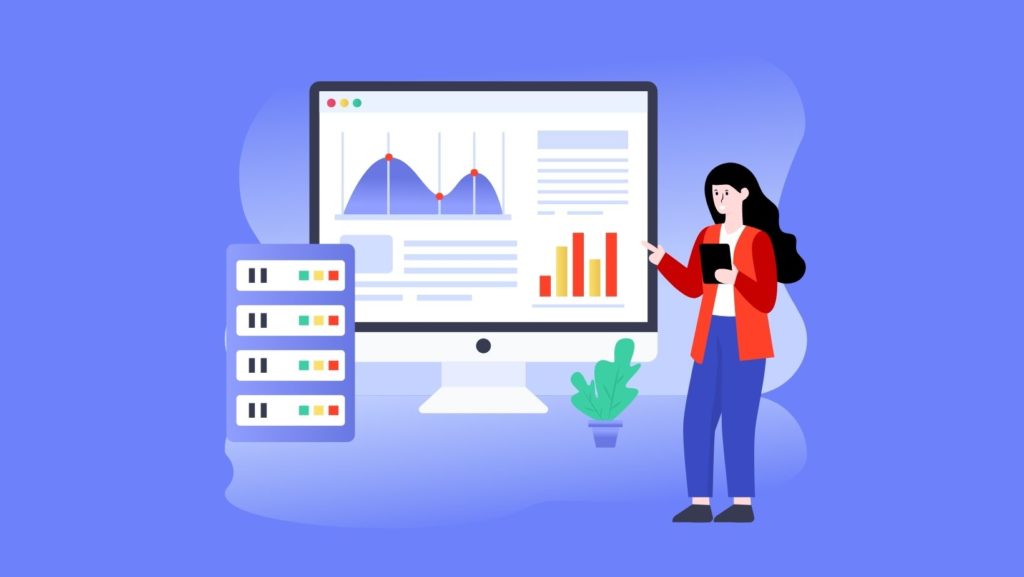
Social Media Analytics refers to the activity of collecting, monitoring, analyzing and presenting data relating to your activity on social networks.
It can concern any social platform: Facebook, Instagram, Twitter, YouTube, LinkedIn, Twitch and TikTok.
For years we have been hearing that “data is the oil of the future”.
Over the years we have had clear examples of this: from the Cambridge Analytica scandals, through the Covid19 pandemic, to the new regulations in terms of tracking and development of algorithms on social networks.
A topic that is more present than ever, for which even the users themselves seem increasingly attentive and aware.
One thing you may not know (or have not yet learned to make the most of) is how useful data can be to develop or better target your online strategy and optimize your sales chances.
In this article we will see an overview of methodology, tools and best practices to develop a good Social Media Analytics process to replicate in your business.
What is Social Media Analytics?
Over time, Social Media Analytics has become a real specialization in Digital Marketing, conducted by sector experts and data technicians.
The difference lies precisely in the ability not only to collect and centralize data so that they can be read more easily but also to know how to interpret and translate them into effective strategic operations.
Thanks to organized work in this sense, it will be possible for you:
- to know your target audience better
- to perfect your positioning on the market,
- know which contents perform better and which do not
- to know which campaigns have achieved the pre-established objectives more effectively
- how to better invest resources in the future
Let’s now see some fundamental steps to create a Social media Analytics process.

How to use Social Media Analytics?
1. Identify your Goals
If you are a marketer you will be familiar with the concept of funnels.
If you are fasting these terms, just know that the customer, before purchasing your products or services, normally goes through a series of phases ranging from the first approach with your brand to the actual conversion.
This process as a whole is normally represented in the shape of a funnel to underline the increasingly restricted portion of users who reach the bottom of the conversion path.
Each of these phases corresponds to a specific objective to focus on before putting any action on social media into practice.
What do we want to achieve?
- Awareness = to make our product or service known to a “cold” audience of users who do not know us?
- Information = inform users who have already shown an interest?
- Engagement = engage the public?
- Conversion = convincing them to buy?
Once our objectives have been clarified, it will be up to you to select the best digital marketing actions to be put into practice in the specific case.
2. Select the right KPIs for Social Media Analytics
Once the objectives we intend to achieve have been clarified, it is time to select the main KPIs to be monitored for our Social Media Analytics strategy.
KPIs (Key Performance Indicators) are metrics, or data, available for each social platform that reflect our business objectives.
Normally for the Awareness objective we will take into consideration:
- Reach
- Impressions
For the Information and Engagement objective:
- Total of Interactions (Likes, Comments, Shares, Saves the post, i.e. all actions that involve users)
- Engagement Rate (relationship between Interactions and total Impressions)
For the Conversion objective we will evaluate:
- Purchases or conversions
- Lead Generation (registration of user contacts)
- Website visits
- Click on URL
3. Proceed to Data Extraction
Now that you have identified the KPIs for each objective it is time to extract data from your social channels. But how?
Each social platform has sections of “Insight” from where you can access and consult the data relating to your business. There you can find the KPIs we have previously talked about: Impressions, Reach, Comments, Likes, Shares, Followers etc.
In some cases like Facebook, YouTube and LinkedIn it is possible to extract the data in an open format to be saved directly on your computer.
In other cases, such as Instagram, the data can only be consulted via the mobile app… but let’s not despair.
In the event that you decide not to use more structured analytical tools (which we will see later), the process consists in manually extracting the data directly from the platform.
Although the Insights of each platform already provide graphs on the progress of your profile, for the actual analysis we recommend that you use external software in order to centralize all the data of the different channels.
For example, you could create a single Excel file with different sheets for each platform or for each goal to keep track of your channels from one place.
4. Create your graphics and pay attention to aesthetics!
Excel or Google Sheets give you the possibility to directly create graphs starting from the tables you have compiled with the data at your disposal, but you could consider the idea of using a different tool only for the visualization phase.
We know that aesthetics, especially when presenting the results, are very important. For this there are specific softwares to make the most of your views such as Google Data Studio, Tableu or PowerBi.

The most used tools for Social Media Analytics
1. Google Analytics
Google Analytics is an excellent tool that, if connected to your company’s website, is able to provide you with very useful data on traffic, your audience, user behavior and where they come from.
Ok, it does not concern social networks specifically but indirectly it can be used as a source of data and information also for what concerns social channels, such as monitoring campaigns and sources of origin.
2. Sprout
If you intend to simplify the data collection and centralization phase (and above all, you have the budget to invest), we recommend that you evaluate some widely used tools for both Social media Management and Analytics.
The first is Sprout, a well-known tool for cross-channel analysis of your social performance. In addition to providing an overview of all KPIs and giving you the ability to create custom reports, it offers a very advanced Social Media Listening plan for analyzing your audience, conversation trends and viral content. Very interesting.
3. Hootsuite
Direct competitor of Sprout, Hootsuite is one of the most used tools by companies for managing social channels. It allows you to link all your profiles: Facebook, Instagram, LinkedIn, YouTube and keep all the data of interest at hand.
It offers advanced management, planning, competitor analysis and analytics plans for all platforms.
4. Keyhole
Keyhole is another well-known tool for Social Media Listening and monitoring what your customers say about you online.
Helps to create simple but effective Competitor Analysis Reports using Real Time and Sentiment Analysis data, measure the performance of your online campaigns to help you target your content strategy.
Now it’s your turn to try!
Are you ready to focus on Social Media Analytics?
Take advantage of the free trials of the tools we recommended and choose the one that best suits your case or create first-hand reports starting from the data provided by the platforms.
Experiment and let us know how it went!
Don’t forget to check our Blog for other news.



